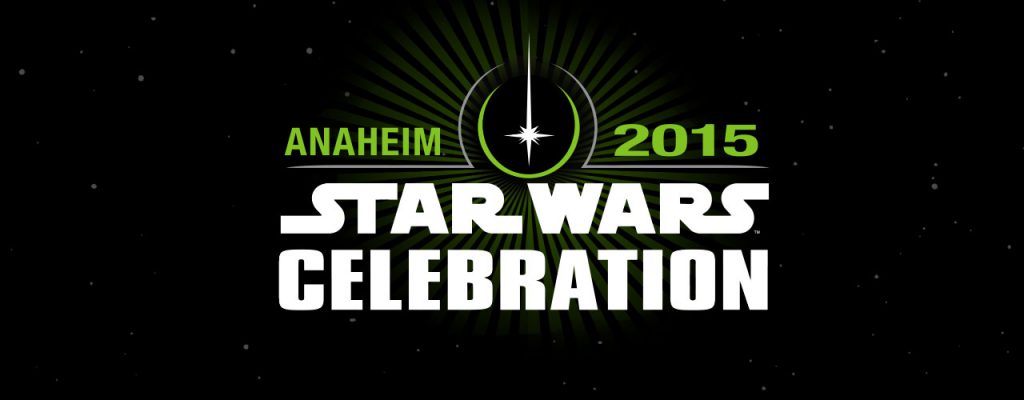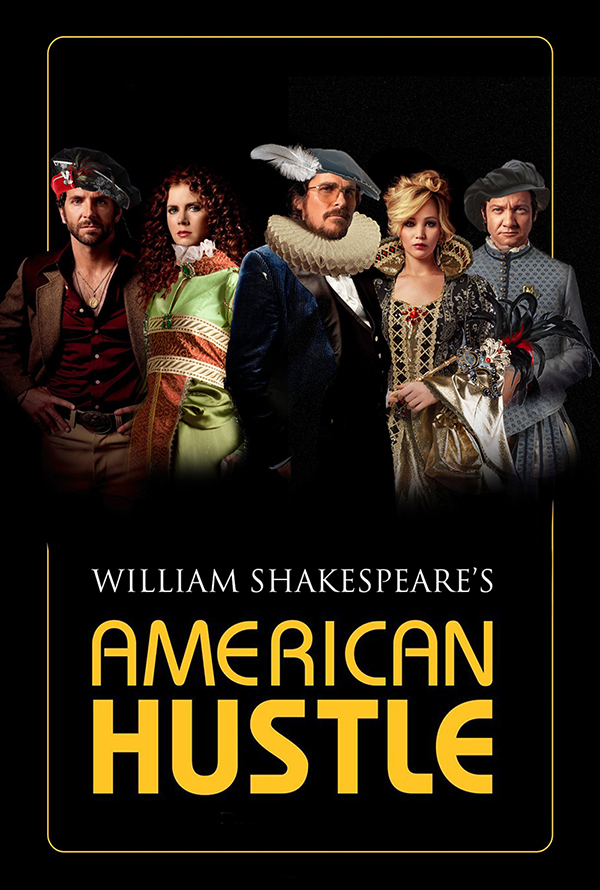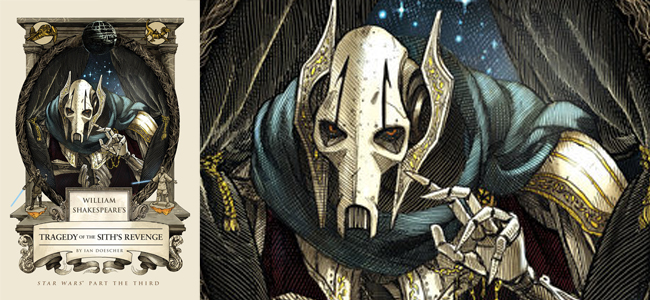A Conversation with Ian Doescher, Author of William Shakespeare’s Star Wars®
George Lucas and the Bard of Avon aren't the only two creative forces behind the upcoming William Shakespeare’s Star Wars®—author Ian Doescher had the genius to combine the two. We sat down with Ian to ask age-old questions about inspiration, iambic pentameter, and who shot first.
QB: What inspired you to combine Star Wars with iambic pentameter?
ID: In the spring and summer of 2012, I read Pride and Prejudice and Zombies, watched the Star Wars trilogy for the millionth time with some good friends, and attended the Oregon Shakespeare Festival with my family, where my wife and I saw the funny, gay-marriage-themed, modern adaptation The Very Merry Wives of Windsor, Iowa by Alison Carey. So within the span of a few months, I had mash-ups, Star Wars, and Shakespeare (specifically, clever takes on Shakespeare) on my mind. It was the morning after watching The Very Merry Wives of Windsor, Iowa, while we were still at the Shakespeare Festival, that I had the idea for William Shakespeare’s Star Wars®.
QB: Writing in iambic pentameter isn’t easy! How and when did you start writing in this style?
ID: The first time I had to write iambic pentameter was for a paper during my senior year of high school. We had just finished a unit on Hamlet and were discussing John Dryden’s poem Mack Flecknoe, which is a satire against another poet, Thomas Shadwell. We were supposed to write our own version of Mack Flecknoe, writing against something we didn’t like. I wrote a poem against Barney, the purple dinosaur, which included the required ten lines of iambic pentameter. (A sample: “‘The Purple Hero’ I am known to you,/I love you more than both your parents do!”) I’ve been trying my hand at sonnets and other bits of iambic pentameter ever since.
QB: There are quite a few allusions to Shakespeare’s famous works throughout William Shakespeare's Star Wars®. How difficult was it to choose which plays and sonnets were worked in to the book?
ID: The allusions to Shakespeare’s works are references I carry around in my head, so most often the allusions to plays flowed naturally with a particular character’s dialogue. Other times, the references were more carefully planned. For instance, I knew I wanted to have a scene where Luke was holding a storm trooper’s helmet, similar to Hamlet with Yorick’s skull. The image of Hamlet holding the skull is the image most commonly associated with Shakespeare’s plays, so I really wanted to work in that image.
QB: What do you prefer, the works of Shakespeare or Star Wars Episode IV?
ID: That’s like asking me to pick one of my children. But if you make that a desert island question—i.e., which would I rather have with me if I were on a desert island for the rest of my life?—it has to be Shakespeare. There’s just so much depth there. (Besides, I’ve got Episode IV memorized, so I’ll always have it with me.)
QB: What was your writing process?
ID: At this point, I work a full-time job beyond writing (to say nothing of parenting), so my writing generally happened in one- to three-hour bursts late at night, after my kids were asleep and my wife was immersed in a British murder mystery series. I would give myself a goal: tonight, I’m going to get two minutes of the movie written, or four minutes. I played the DVD to hear the lines (and checked anything I was unsure of with the script for A New Hope online), then “translated” the dialogue into iambic pentameter. Sometimes this went smoothly, and other times—particularly when I went down the rabbit hole of writing a monologue or new scene—it took much longer.
QB: Do you think George Lucas was inspired by Shakespeare’s writings?
ID: Not directly. But I do think any modern storyteller is influenced by the stories we all grow up with and become familiar with, our shared cultural narratives. Shakespeare’s plays are a part of that tradition, so George Lucas was probably influenced at least somewhat by Shakespeare, as well as Twain, Dickens, Melville, etc.
QB: If you were to cast a stage performance of William Shakespeare’s Star Wars®, who would you cast to play Princess Leia, Obi-Wan Kenobi, Luke Skywalker, Han Solo, and Darth Vader?
ID: I’d still cast the originals, but if that absolutely weren’t an option . . . maybe Emma Watson as Princess Leia, Tobey Maguire as Luke Skywalker, Matt Damon as Han Solo, Kenneth Branagh as Obi-Wan Kenobi, and Patrick Stewart as Darth Vader (bridging the Star Wars/Star Trek divide). Kevin Kline would be my Chorus.
QB: Are there any characters in the Star Wars canon you identify with?
ID: Han Solo is my favorite character, but I can’t honestly say I identify with him—I don’t have the swagger. I’m probably more like C-3PO, the nerdy guy who’s always trying to help.
QB: If you could check out any books from the Jedi Temple’s lost library, what would they be about?
ID: Jedi mind tricks, mostly for making my kids brush their teeth without complaint.
QB: Who shot first?
ID: Han Solo, says me and every other true fan out there.
QB: Are there any other Shakespearean crossovers in your future?
ID: Time will tell . . . I’d love to write The Empire Striketh Back and The Jedi Doth Return, and I have other Shakespearean projects on my mind too. Mostly, I hope that by having some fun with Shakespeare’s style I’ll encourage young people who are intimidated by Shakespeare to give him a try.

Blair Thornburgh
BLAIR THORNBURGH is a graduate of the University of Chicago, where she earned a B.A. in medieval studies and delivered a pretty good commencement speech. She lives in Philadelphia.



